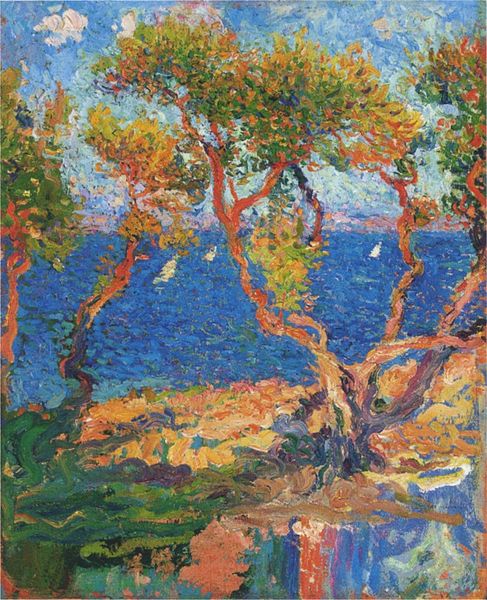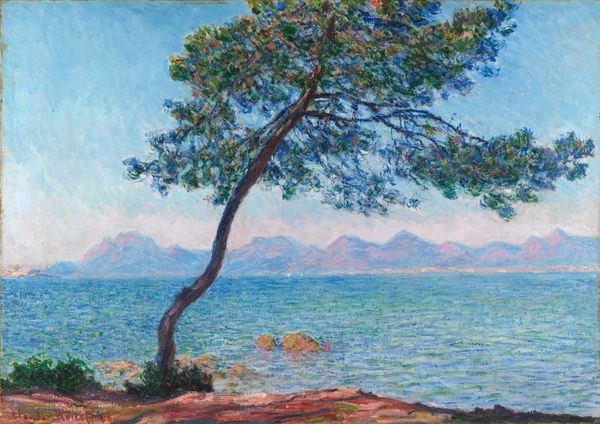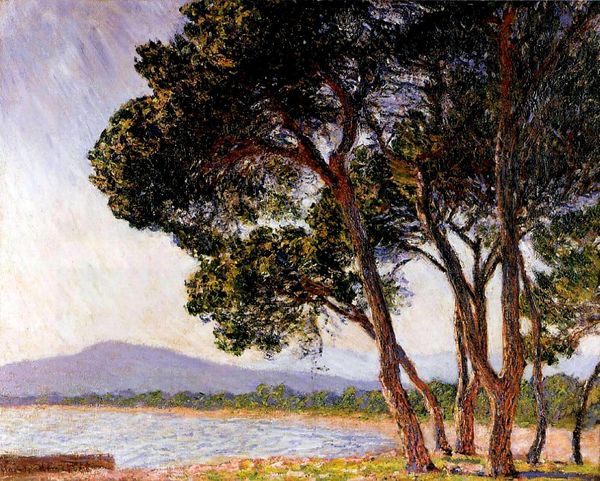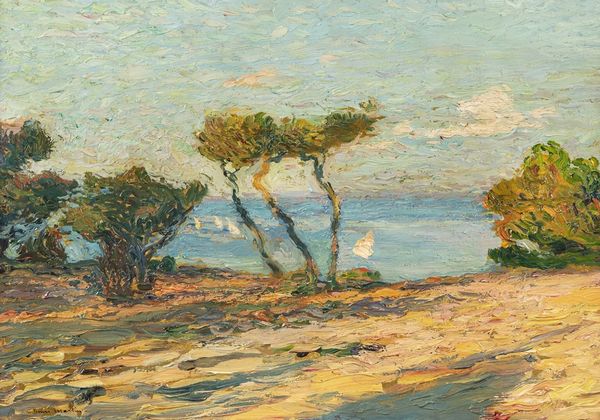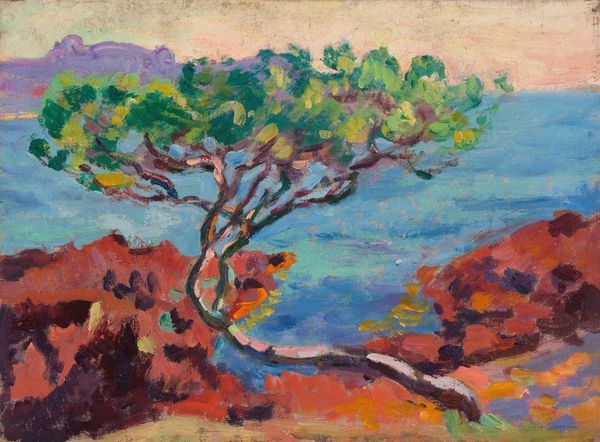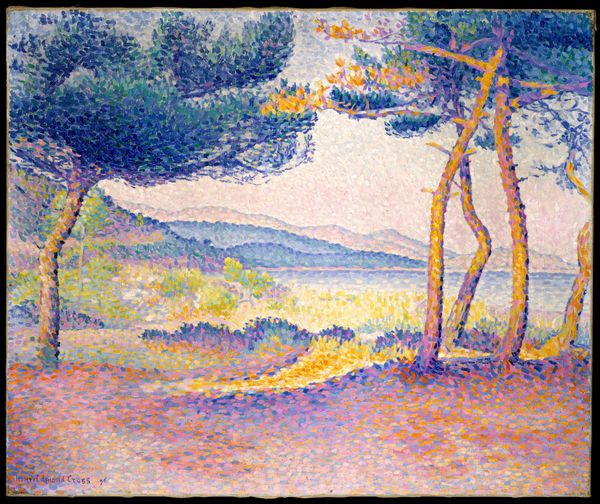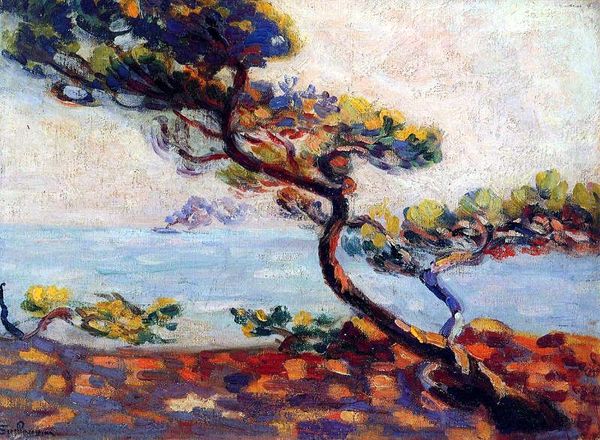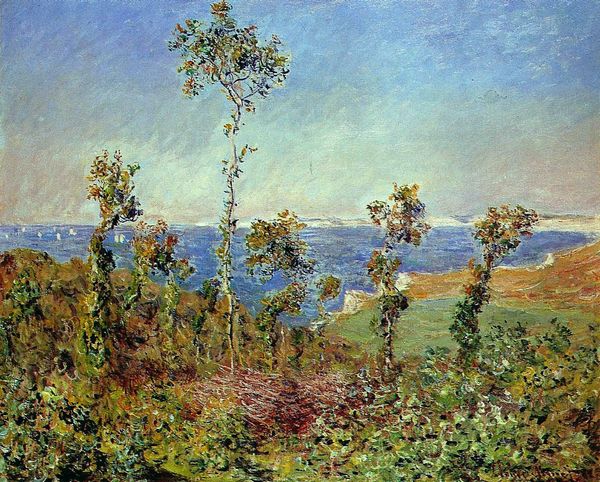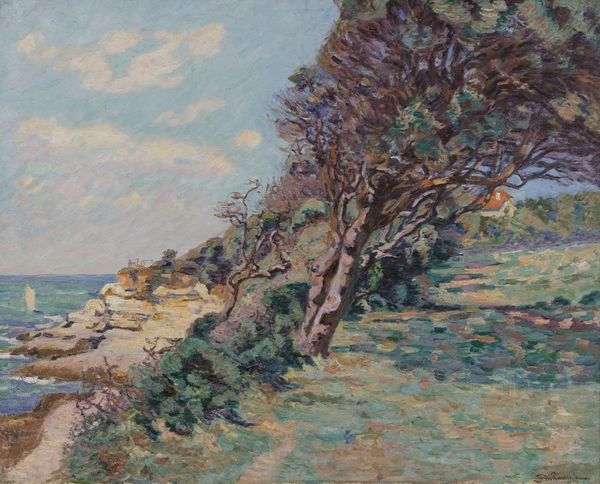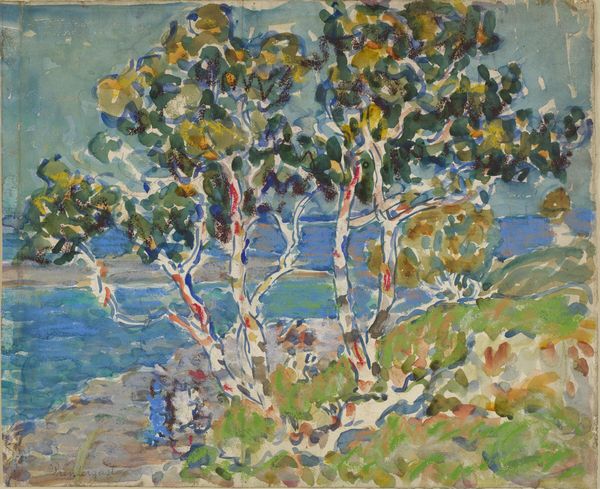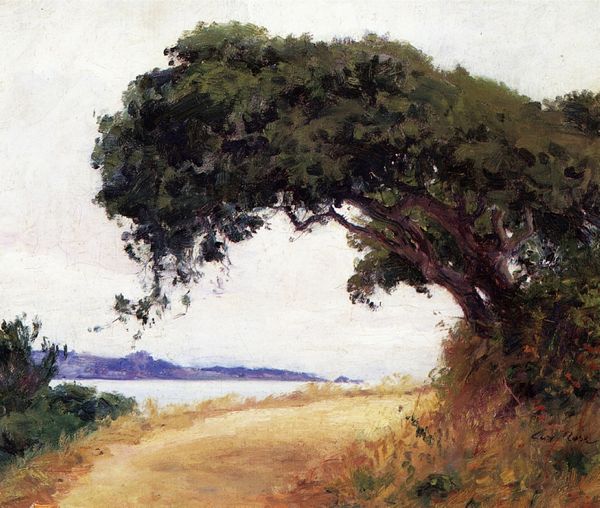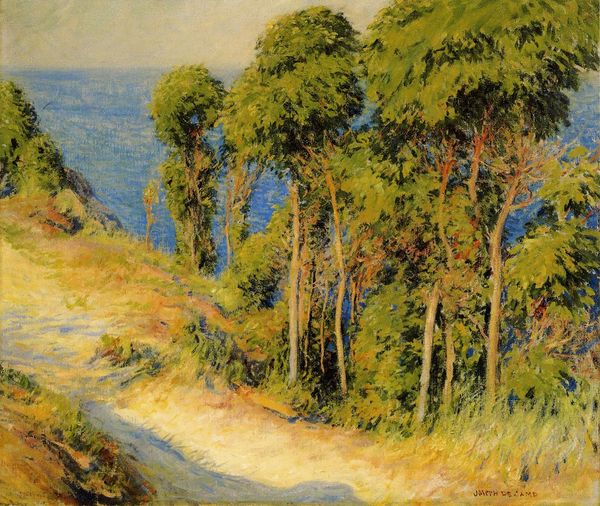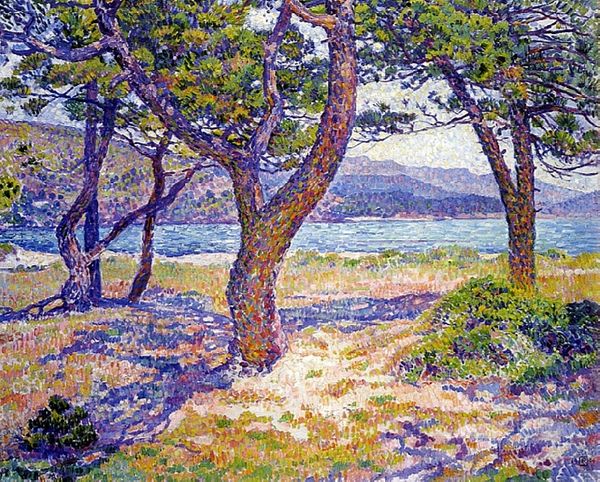
Dimensions: 81 x 199 cm
Copyright: Public domain
Editor: Here we have Theo van Rysselberghe's "Pine by the Mediterranean Sea," painted in 1916 using oil on canvas. It really evokes a sense of peace, almost stillness, doesn’t it? The way the tree stands against the water. What stands out to you when you look at this piece? Curator: Oh, absolutely, that sense of serene stillness is key. You know, for me, it’s that lone pine, clinging to the rocky edge. I imagine it weathering countless storms, yet there it stands, bathed in the warm Mediterranean sun. It whispers tales of resilience and persistence, doesn't it? I see echoes of Symbolism too. Doesn't that tree kind of *become* the embodiment of perseverance? It's fascinating, this simple scene loaded with feeling. Editor: Symbolism? I hadn't thought of it that way. I was just thinking about how the dots of paint create this shimmery effect on the water and leaves. It’s so Impressionistic. Curator: Right! It *is* Impressionistic on the surface. But Van Rysselberghe was wrestling with a bit of a tension, I think, between the pure optical sensations of Impressionism, and something deeper. What's behind the surface shimmer, what's constant? That tree's like an anchor for the whole scene, wouldn’t you say? Something permanent in the flux. It's holding a steady thought. Editor: That makes so much sense! So he’s not just painting what he *sees*, but what he *feels* about what he sees. It adds a whole new layer. Curator: Precisely. And, that's the power of art, isn't it? Transforming fleeting moments into enduring reflections. It asks what will remain…the pine endures… Editor: It definitely changes how I view the painting. Thanks, I'll have to remember that the next time I encounter what looks like a "simple" landscape.
Comments
No comments
Be the first to comment and join the conversation on the ultimate creative platform.
